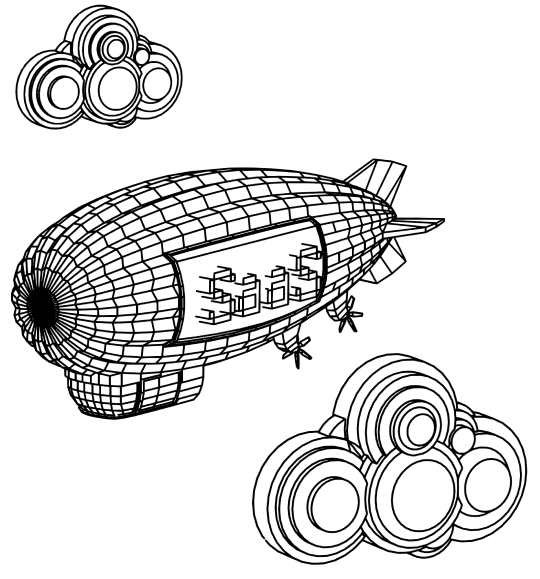Being a project manager at a software house, it’s important for me to look for new ways to boost self-motivation, improve effectiveness of project teams and help with growing and transforming the organization’s culture.This is why I decided to try out tools and techniques proposed by Management 3.0.
What is Management 3.0?
According to the official website: “Management 3.0 is a movement of innovation, leadership and management. Management 3.0 is redefining the definition of leadership with management as a group responsibility. It’s about working together to find the most efficient way for a business to achieve its goals while maintaining the happiness of workers as a priority.”Management 3.0 offers games, tools and practices which can be used to motivate teams, improve organization’s culture and boost productivity. It addresses common questions how can we:
- Reward people in a better way?
- Replace performance appraisals?
- Motivate our teams?
- Change the organization’s culture?
The basics of Management 3.0 movement are founded on 6 main pillars:
- Energize people - focus on and motivate people as they are the most important part of the organization.
- Empower teams - let teams act and make their own decisions
- Align constraints - align/remove constraints on organizational and team level
- Develop competence - create interdisciplinary teams, find mentors and let them coach others
- Grow structure - be responsible for the direction of org structure growth
- Improve everything - experiment, adapt, improve
Meet “Martie” - he visualizes all 6 Management 3.0 pillars:
Apptension’s journey with Management 3.0 starts now!
In April, my colleagues (PMs) and I decided to participate in one of the meetups organized by Agile Poznań group. The topic of this meetup was “Modern management - Management 3.0”. We got hooked!
“This is cool! Let’s use it!”
The meetup was conducted by Jakub Bżela, an Agile practitioner and Management 3.0 trainer. It was a really interesting meeting during which Jakub showed and described useful and fun techniques that Management 3.0 provides. This was it! Right after this meeting we immediately started to figure out how we can use this approach in our organization. We all agreed to take further actions and introduce it to the rest of the people at Apptension
Step 1: Learn more.
Together, we’ve decided to buy a book written by Jurgen Appelo and dived into the sea of Management 3.0 wisdom. The first person who grabbed this book was me. The book itself is full of very handy content such as Management 3.0’s purpose or case studies. What’s more, it brings to the table lots of great tools and practices that can be used on a daily basis to fill-out all gaps that agile methodologies like Scrum or Kanban have in regard to team members motivation.
Step 2: Prepare a presentation.
Because management is too important to leave to the managers!After a couple days of reading the book, online articles and making notes, I was ready to share my insights with my colleagues. I prepared a presentation about Management 3.0 which I divided into three parts:
- First two parts were just a simple description of management itself and explanation how do we understand Management 1.0 and 2.0.
- Third part is strictly about Management 3.0. I divided it into 6 smaller pieces where each piece represents one of six Management 3.0 pillars.
I also proposed a game for each pillar so thanks to that audience could easily connect practices with specific Management 3.0 idea.
The Idea
My main idea for the presentation was to gather Apptension employees, introduce them to Management 3.0 and start a discussion whether we all want to use it in some way. At the beginning of the presentation, I’ve announced that we should not treat this as a revolution but more like a starting point for further discussion and experimenting. I think such information changed the meeting’s context and made people think “How can I use it to improve myself and my surroundings?” instead of “Why should I use this?”.I recommend adopting such an approach when trying to convince people to experiment with new techniques.
Step 3: Show it to people and decide
We’ve ordered pizza, some cold beverages and organized a meeting for our team. As I expected, the first two parts went smoothly. People didn't ask questions, probably because it was just general knowledge focused around management. Nevertheless, I feel these two parts were important because they showed what are the main differences between Management 1.0, Management 2.0 and Management 3.0. It was crucial for all of us to understand why we would like to try experimenting with Management 3.0 tools and practices at Apptension.After moving on to the third part of the presentation, I’ve started showing and describing practices of our choice. At this point, the audience became alive and people started actively asking questions and talking to each other. “Success! People are interested!” was the first thing that came to my mind. People pointed out that some of these practices could be very helpful in particular parts of project development. We've planned the presentation for around 1 hour. It ended after 2 hours; and despite this, everybody was really hyped and happy about it.There were three main techniques that brought the most discussion amongst the participants:
1. Moving Motivators
It was first developed for team managers for one-on-one sessions to learn more about what motivates their team members. Now it is used openly with whole teams, between start-up founders and even in personal relationships. It shows the effect of particular events (e.g. change in project scope) on each team member’s motivators and indicates on what aspects you could work on your own or within the whole team. More on that particular exercise in the “Use it” section.
2. Kudo Box
This practice is fully focused on intrinsic motivation brought on by all organization members, not just top-down bonuses. A Kudo is a gesture of thanks and it’s a way to write thank you notes and other notes of acknowledgement that then can be collected in a box and read aloud in front of your colleagues.
3. Competency Matrix
A tool that helps to identify gaps both in our individual professional experience or expertise and within the team. You need to know both what your employee wants to learn and how it can or cannot fit with the goals of the company.
We’ve all agreed that from this point we should focus only on these three practices and start experimenting with them in small groups. Our decision was to first try to implement Moving motivators. After a few weeks of experimenting with this particular practice we will decide on whether we want to continue using it or not. After that we will move to Kudo Box, and so on.We also talked a bit about Meddlers Game. Basically this practice allows to visualize and discuss organizational structure and determine roles as changes are happening in organization structures.
Since we are a software house, which delivers lots of projects, changes in our structure happen very often. During our discussion it came out that we already have another solution supporting this process. One of our “in-house” projects is Teamdeck which helps us with resource management in real time. Thanks to Teamdeck, we are always able to assemble functional or cross-functional teams for new projects and implement changes in current projects. The biggest advantage of this approach is that we always have up-to-date data so we can see what impact on a particular project changes made in other projects have. Kudos to Apptension!
Step 4: Use it
From that moment we are experimenting with Moving Motivators. First, we took it to our PM meeting. This is a weekly internal meeting during which all PMs at Apptension gather and talk about the recent week regarding the status of our current projects and discuss new ideas that could help our organization grow in a stable and safe way.Moving Motivators is all about placing motivator cards in order from the most important to the least important. After that, you should move a particular card up if a certain situation (e.g a change in your organization) had a positive impact or down if the impact was negative.
First impression
Our first impression was that it is quite challenging to try put these motivators inorder and then talk about our choices with other team members. On the other hand, however, we’ve noticed that this is a great game for getting to know your team members better. It also shows our personalities and really helps to understand each other. It’s very easy to start using this game, because all necessary materials are downloadable for free on the official Management 3.0 website.
We would like to continue working with moving motivators amongst PMs for a couple of weeks just to be sure that we are doing it right. After that we will spread it among other teams. We are going to use this game as a common practice for retrospective meetings. I believe that thanks to that, team members will know each other’s motivators better so that they will be able to cooperate and act in a way that will be acceptable for all of them. It can also show how particular changes in a single project or whole organization can impact individuals.Of course I will update you all about what happened with Moving motivators in Apptension. Can’t wait!
Next steps
Taking small steps, we are going to discuss how could we could implement Kudo Box and what results we expect. The initial idea is to have one Kudo Box for the entire company. Because of that, we would like to discuss it with at least one representative of each department in our organization.Stay tuned!






















